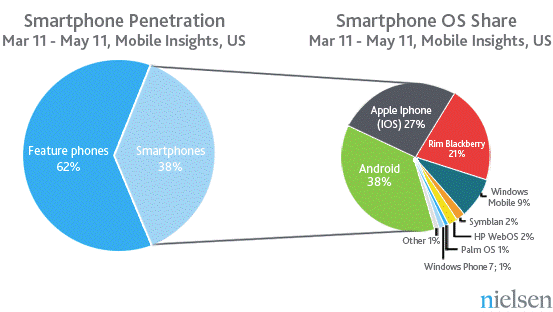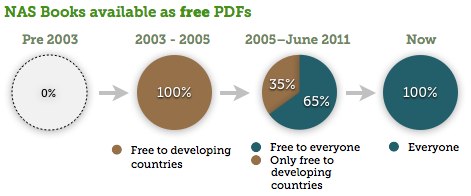Community Embraces New Word Game at Mid-Year Play Day This past Sunday, families at Takoma Park’s Seventh Annual Mid-Year Play Day had the opportunity to experience OtherWordly for the first time. Our educational language game drew curious children and parents to our table throughout the afternoon. Words in Space Several children gathered around our iPads […]
Read moreCategory: Business
 As Tropical Storm Irene was passing up the East Coast, and tens of millions of Americans successfully prepared for the storm, FoxNews ran an op-ed piece, featured on their home page on 27-August, from the Competitive Enterprise Institute. The CEI’s mission is “limited government, free enterprise, and individual liberty.” Original is here. Aside from misleading criticisms, this essay overlooks that all private weather services use NWS data. Data from satellites and buoys, which requires massive supercomputers to process, and sophisticated expertise to analyze. (more…)
As Tropical Storm Irene was passing up the East Coast, and tens of millions of Americans successfully prepared for the storm, FoxNews ran an op-ed piece, featured on their home page on 27-August, from the Competitive Enterprise Institute. The CEI’s mission is “limited government, free enterprise, and individual liberty.” Original is here. Aside from misleading criticisms, this essay overlooks that all private weather services use NWS data. Data from satellites and buoys, which requires massive supercomputers to process, and sophisticated expertise to analyze. (more…)
Summer mobile trends
June 30th, 2011 by IDEA
Mobile is exploding, and this has vast implications for education. Here’s a summary of top news and trends for mobile this summer…
Smartphones are popular phones. According to Nielsen, 38% of Americans now own smartphones, and 55% of those who purchased a new handset in the past three months bought a smartphone (rather than a dumb one), up from 34% a year ago. Android’s growth curve flattened in 2011 while the iPhone’s got a boost. Collectively, Android and iOS are activating over 800k devices per day.
![]() All publications from the National Academies Press (NAP) are now available for free as PDFs. NAP is the publishing arm of the National Academies, and publishes 200+ books a year on topics in science, engineering, and health.
All publications from the National Academies Press (NAP) are now available for free as PDFs. NAP is the publishing arm of the National Academies, and publishes 200+ books a year on topics in science, engineering, and health.
Making the PDFs free is the culmination of a decade of research and sales modeling on how to finance a nimble publishing house with paid print books, with enough spare revenue to allow free release of electronic books. Here’s the evolution:

IDEA’s second mobile app, WikiNodes (see app store link) puts the encyclopedic knowledge of Wikipedia at the fingertips of iPad users. Articles are displayed as nodes that can be touched, dragged and spun around — showing the relations between articles and sections of articles. The app is currently featured in Apple’s app store.
Here’s a 30 second demo:
The app is based on IDEA’s SpicyNodes system for displaying and navigating information using nodes (see SpicyNodes.org). The SpicyNodes approach has great potential for other subjects, from browsing museum collections and archives, to browsing flora & fauna, and many other kinds of linked data.
Virtual exhibits on tablet devices (e.g., the Apple iPad) put exhibits at the fingertips of students and the public. Visitors can browse science, art or culture from classrooms, during their commutes, or from their sofas. — But where does the money come from?
As with physical museums, the problem with charging money for downloads is limiting visitation to enthusiasts. Access must free to get significant use on tablet computers in classrooms, or by people who would not otherwise pay. Aside from grant support or advertisements, are there other revenue models? Could funding come from the community?
We posit that virtual exhibit apps could be free downloads, giving a preview teaser. Then, to see the rest of the exhibit, visitors pay for access, sponsor access for others, or request free access. Here’s how it might look: (more…)
![]() Over 70% of U.S. museums are in economic distress, according to a new report from the American Association of Museums. Here are some key findings: (more…)
Over 70% of U.S. museums are in economic distress, according to a new report from the American Association of Museums. Here are some key findings: (more…)
 The National STEM Video Game Challenge, awarded the $50k grand prize last week to a professional team that did not meet the eligibility criteria.
The National STEM Video Game Challenge, awarded the $50k grand prize last week to a professional team that did not meet the eligibility criteria.
This story came to my attention last week, when I wrote a blog post about a cool online science game for Middle School kids which won the grand prize as part of the contest run by the Joan Ganz Cooney Center at Sesame Workshop (the parent organization of Sesame Street) and E-Line Media. That article briefly mentioned anomalies in the contest, and the Cooney Center sent me an email: “Please take this article down as soon as possible because of a legal issue that is pending.” This made me wonder, is there a scandal on Sesame Street?
 Open access means that readers have free access. But who pays for the operational costs of running a publication? Often it’s the authors, though there are several common business models.
Open access means that readers have free access. But who pays for the operational costs of running a publication? Often it’s the authors, though there are several common business models.
How much are authors paying? What do they think about it? And what are some other business models to sustain journals and other kinds of digital content? (more…)
The following were the twenty most visited art exhibitions of 2010: (more…)





 Museums and archives manage information about their collections, facilitate interdepartmental communication, and make collections available to the public using collection management software. Here’s a rundown of the collection management systems being
Museums and archives manage information about their collections, facilitate interdepartmental communication, and make collections available to the public using collection management software. Here’s a rundown of the collection management systems being